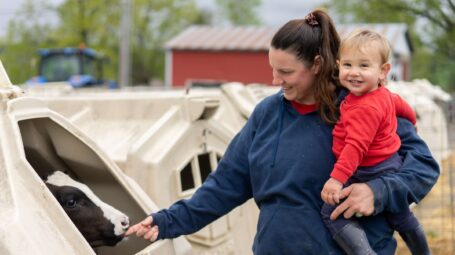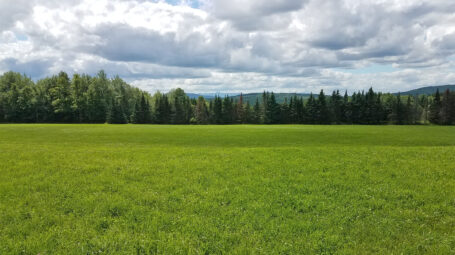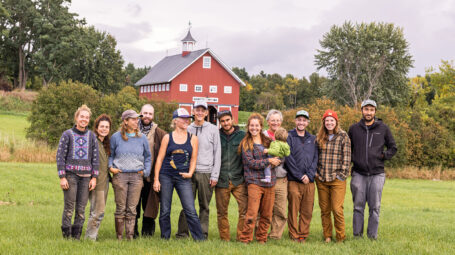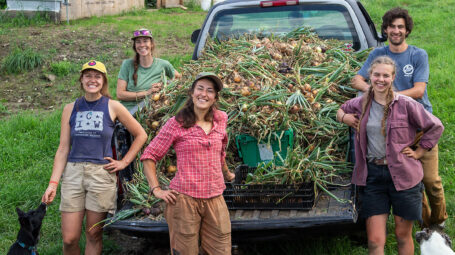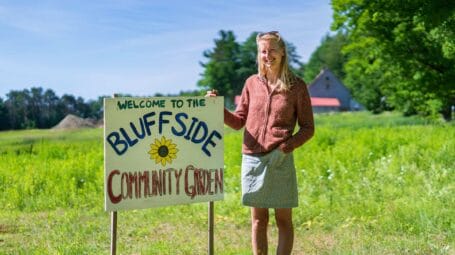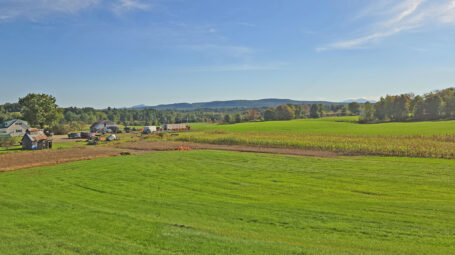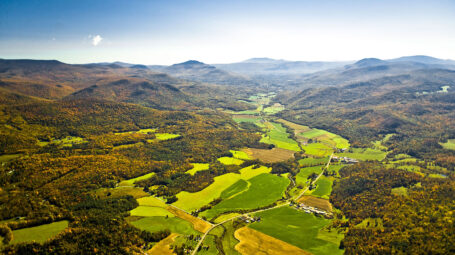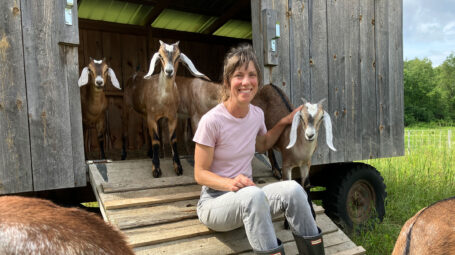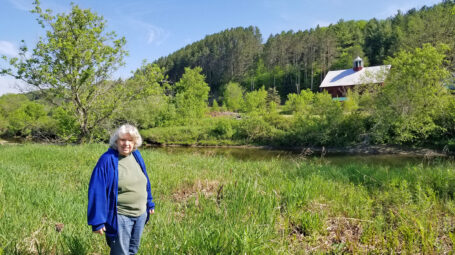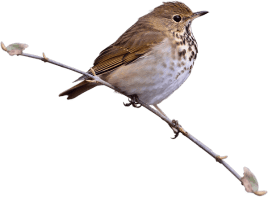Partners team up to advance river conservation, climate resilience and recreation
DeFreest Farms, with support from local, state and federal conservation partners, has successfully protected a 70-acre parcel in Waitsfield for farming, flood resilience, and recreation. The conservation project is the first in the nation to close under a new funding program to help farmers acquire farmland through USDA’s Natural Resources Conservation Service (NRCS).
Visible from Route 100 and located on Tremblay Road, the newly protected land lies along the eastern bank of the Mad River in the heart of the scenic and productive Mad River Valley.
Fourth-generation dairy farmer Dave DeFreest and his extended family operate a 1,200-cow operation based in Warren, Vermont. The farm primarily relies on rented cropland, including this 70-acre parcel. The DeFreests previously rented it from the former owners, Laurie and Don Spaulding, whose family operated a dairy from the 1960s to the early 2000s.
“Working with the Vermont Land Trust on this project has helped us secure a vital piece of our existing land base as well as contribute to our ongoing goal of environmental stewardship,” said Dave DeFreest. “The funding provided by many generous donors allowed us access to affordable farmland, while allowing the Spaulding family to sell the property for a fair market price.”
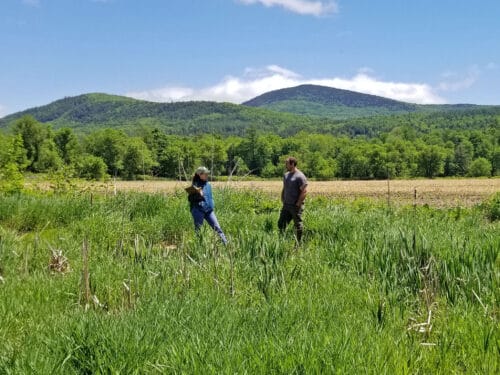
Former VLT staffer Liza Walker on a site visit with Dave DeFreest at the Waitsfield farm.
The land went on the market in 2020, after Don Spaulding passed away. In 2021, after discussions with the Spaulding and DeFreest families, VLT purchased the land with the intent to conserve it and eventually sell it to the DeFreests at an affordable price. The family continued to lease the land with the goal of buying it, subject to conservation restrictions. That happened on January 18.
The conservation easement on the 70-acre parcel protects its productive soils from development and ensures that the land will remain available to future farmers. It also protects the property’s many water, habitat and recreational resources.
“This multifaceted conservation project provides many public benefits – all of which are enabled by farmers like the DeFreests who are willing to participate in a rather complicated process,” said VLT Conservation Director Britt Haselton . “I’m really grateful for Dave’s patience and for his family’s deep commitment to the Mad River Valley community. And we’re equally grateful for the terrific conservation partners that helped make this project happen.”
National first under NRCS “Buy-Protect-Sell” program
This was the first farmland conservation project in the country to close under the NRCS’s Service’s “Buy-Protect-Sell” program, part of NRCS’s larger Agricultural Conservation Easement Program (ACEP) that funds the protection of the vast majority of working farms in the US.
Buy-Protect-Sell provides conservation funds for eligible entities (such as land trusts) to acquire farmland that is at risk of being developed, and sell it to a farm operation after protecting it. The model is increasingly important in Vermont’s pressured real estate market. The Vermont Housing and Conservation Board (VHCB) was an important partner on the federal NRCS grant for the project.
“The NRCS is proud to stand alongside the DeFreest family, and our conservation partners like the VLT and VHCB, as we promote responsible stewardship of land in Vermont,” said NRCS State Conservationist Travis Thomason. “More than ever, we need innovative ideas to help us achieve our goals and to advance our agency’s mission to deliver conservation solutions so agricultural producers can protect natural resources and feed a growing world.”
“VHCB greatly appreciates Dave DeFreest’s commitment to agriculture and his great patience as NRCS worked to develop the policies and procedures to implement the Buy Protect Sell provisions of the farm bill, and we thank Senator Leahy for creating these provisions,” said VHCB Executive Director Gus Seelig. “The Vermont Land Trust has brought skill and resources into helping young farmers access land, and their efforts in partnership with farmers like Dave have enhanced the vibrancy of our agricultural heritage.”
Protections for the river
In addition to the NRCS-funded farmland conservation easement on the entire 70-acre parcel, the Vermont Department of Environmental Conservation provided funding for a separate “river corridor easement” on 38 acres along the Mad River. The river corridor protections will ensure that the Mad River will be able to move freely over time and spread into its natural floodplain when waters rise.
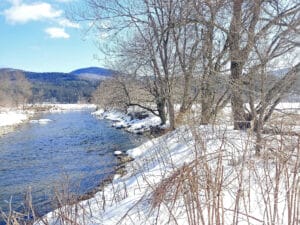
Thirty-eight acres along the Mad River have been protected for river health and flood resilience.
Furthermore, more than eight acres have been retired from farm use and enrolled in the USDA’s Conservation Reserve Enhancement Program (CREP), which provides financial and technical assistance for implementing riparian buffers. About seven acres of former cropland will be planted with native trees and shrubs to benefit clean water, flood resilience and wildlife habitat. Going forward, VLT and partners will continue to work with the DeFreests on restoration projects that enhance and balance the land’s ecological functions and its agriculture use.
Recreation opportunities expanded
During VLT’s ownership, the Mad River Path Association developed over a mile of new public trails across the conserved land. A public access provision in the conservation easement ensures that this trail will remain available for people to use into the future.
The effort was also supported by the Vermont Department of Environmental Conservation and their Clean Water State Revolving Fund, the U.S. Fish and Wildlife Service’s Partners for Fish and Wildlife program, Vermont Agency of Agriculture, Food and Markets.

